Future mobility: the transport solutions of the future are already here with us today. A progress report.
People working on the transport solutions of the future need to base their ideas on the premise that cars – in the way they’re driven by the masses today – will be just one of a number of transport building blocks, not the crux of transport systems. They will be replaced by a network of completely different modes of transport, ways for humans to satisfy a basic need and travel as quickly and conveniently as possible from A to B. At least that’s the theory. And what will it look like in practice? Not bad actually. As we discover in this personal review.
Of luxury – and the luxury of not owning a car
I live such a life of luxury: since the beginning of the millennium, I’ve no longer owned a car. Hang on, isn’t owning a car what a life of affluence is all about? Free access to everything – a given right? Well until now, yes. But times change. The role of cars as status symbols is gradually becoming passé. Younger people in particular gravitate towards different status symbols like smartphones. But coming back to my travel habits, of course I do drive a car, in fact I love driving. But using a car to satisfy my travel needs is just one part of the jigsaw puzzle. Admittedly, it really helps living in a place like Stuttgart, a city regarded by many as pioneering when it comes to transport solutions. This role goes back to the early 20th century. It was here that the first Mercedes was engineered, ringing in the era of the automobile. It is also here that not only Daimler and Porsche now have their HQs, but also companies that furnish and fuel the global automotive industry like Bosch, Mahle, Eberspächer and the CODE_n partner Trumpf.
Stuttgart is the heart and lungs of the German carmaking industry, which makes it all the more interesting to find people here already shaping an alternative future for travel solutions. It sometimes feels like a huge laboratory. So as a contemporary of the car-less generation, what does my day travelling around this area look like? To answer that question, we need to assess the things I have on my to-do lists.
Local travel: horses for courses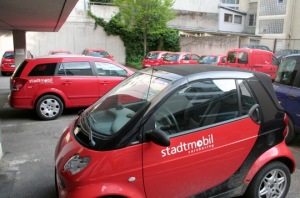 If my destination is fairly near – ie, within 20km – the first question is whether the pretty efficient local transport network can get me there. In my case I have the underground, suburban trains and trams to choose from. I can work out the best way to get there by consulting an app offered by the local transport company. While doing this, I can also buy a ticket on my smartphone.
If my destination is fairly near – ie, within 20km – the first question is whether the pretty efficient local transport network can get me there. In my case I have the underground, suburban trains and trams to choose from. I can work out the best way to get there by consulting an app offered by the local transport company. While doing this, I can also buy a ticket on my smartphone.
- If the local connections are inconvenient or it would take too long to get there (eg, if I need to go to a press conference at the trade fair and decide to take local transport, I’d need almost 45 minutes for a journey of 10 miles), then I switch instead to a car club (or as it’s called in the US: carsharing). I’ve been a member of a carsharing network for 14 years. This is how it works:
- I book a car at a specified location. Overall, I can choose from almost 200 cars of all classes, from a nifty little number for city driving to a mid-range car and even a van.
- I book the car for a fixed time, defining when I’ll pick it up and bring it back.
- I pay by the hour (minimum 30 mins) and kilometre, all costs included.
- I can make my booking online; once a month they send me an invoice and the fees are debited to my account.
- The prices are pretty reasonable. For a journey to the trade fair, where I spend 4 hours, I pay around 11 euros.
- To pick up and drop off the car, I simply swipe my club smart card. I just have to make sure that I drop the car off where I picked it up.
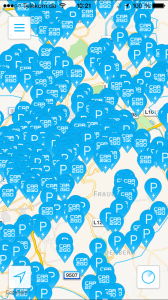 The Stuttgart-based car giant Daimler has also been offering a service called Car2Go for around 2 years now. They’re running a pilot project and there are currently around 500 vehicles on offer. What’s special about the Daimler scheme is that all cars are electric – a Smart Electric drive. The company has been working with the CODE_n partner EnBW to build up a network of charging stations. Currently there are 450 locations and the system is working pretty smoothly.
The Stuttgart-based car giant Daimler has also been offering a service called Car2Go for around 2 years now. They’re running a pilot project and there are currently around 500 vehicles on offer. What’s special about the Daimler scheme is that all cars are electric – a Smart Electric drive. The company has been working with the CODE_n partner EnBW to build up a network of charging stations. Currently there are 450 locations and the system is working pretty smoothly.
- To find a vehicle, members use a handy app. Cars are not fixed to a certain location. They can be anywhere in or around the city. Any member can reserve a nearby vehicle for 30 minutes at the click of a button.
- To get into the car, members use their customer card by simply holding it up to the vehicle. Then they can just get in and drive off.
- When they’ve finished their journey they park the car anywhere in an approved area and check out again with their membership card. That’s it.
- I use Car2Go on occasions when, for example, it would be a bit fiddly using the underground to get to a party. If I do have one or two too many drinks, I take a taxi home, which I can also book with an app called MyTaxi – winner of CODE_n12 AWARD
One of the nice things about Car2Go is that it can be used in any city where the scheme is operating, something I made extensive use of recently on trips to Berlin and Hamburg – for example, for travelling to and from the airport. Which brings us on to long-distance travel…
Going far? The world’s your oyster
So, how should I get about today? On the train? By aeroplane? In a 3-series BMW? Well it all depends…
- Off to Berlin in the morning (650km), back in the evening = aeroplane (flight tickets through the airline app).
- Off to Munich in the morning (250km), back in the evening = train (takes too long by car, too much traffic). Rail ticket via smartphone.
- Christmas travel: off to the north with my wife to visit the in-laws (450km), two days there, pick up my daughter, off in the morning to Frankfurt and back down to Stuttgart in the evening = 3-series BMW through a carsharing scheme. Would be too complicated by train. Impossible by plane or simply too expensive.
But what about the costs?
People often ask me that. So let’s go through the numbers for my Christmas travel. Overall, I’ll be out and about for 4 days and it’ll be a round journey of 1000 kilometres (about 620 miles). Total cost: around 400 euros. Hmm, enough to make you think twice, especially if you’re a car owner. But if you ask me, most car owners don’t realise how much they fork out for their metal wagons every year. Fancy going through the maths for a moment? Let’s assume you own a car in the upper mid-range (long-distance journeys!) and you’re doing around 15,000km per year. You paid €25,000 for the car. Annual petrol €1200. Insurance and road tax €500. Wear and tear (tyres, brakes etc): €500.
Add to that the depreciation over 10 years and you’re easily talking €4000 per year, just to own a car. And the way I see it, the car is costing you something even if you keep it in the garage. Contrast this with taxis, a trip on the underground into the city (with crammed, expensive car parks), etc. But I only incur expenses when I actually drive a car. And: if I need something bigger to pick up something from IKEA, I just go and get a van. If I’m in a city, I use a small car. So overall, I don’t actually pay more, I pay less. This is basically because I do a lot fewer car journeys than I would if I owned a car.
Until now: cars have been a door to freedom.
What I’ve witnessed in Stuttgart: not having a car has been ultimate freedom.
Future Mobility – it’s on the way
I remember the days when they had these really far-fetched reports on TV on how, in the future, road travel would be completely different. It was like watching a sci-fi channel prophesying that one day, we’d have complete traffic overviews in real time. The assumption: all vehicles would be equipped with transmitters updating their exact position every second. Another vision involved cameras positioned every metre along the roadside to transmit the latest information. I thought, no way, what a palaver, that’ll never happen. But actually, this future is now the current reality. Almost unnoticed, Google was out there years ago integrating live traffic data into its map services. The only trick is that there aren’t transmitters in cars, they’re inside the Android smartphones of the car drivers. The system logs their positions, condenses it, and we have traffic data. So the future has been with us for some time, without singing and dancing and girls with pompoms. It just happened.
And so it goes on.
- Google’s experimentation with autonomous, practically driverless vehicles is capturing the imagination of the industrial world. Only last week, at a conference organised by the German federal government, Audi chief Robert Stadler demanded the introduction of testing areas on German autobahns. Under current legislation, there does have to be somebody driving the vehicle but he wants legislation to allow for automatic driving systems that have full control of the vehicle. We do already have the technology to do this.
- Daimler now offers a service called Moovel. This includes an app which uses ‘smart technology’ to pull together information on all available modes of transport. Users type in their starting location and their destination and the app works out the best way to get there – a hire car, local transport, MyTaxi, etc. You can also pay through the app.
- Electric cars are now quiet and emission-free, not only opening the door again to certain no-go areas in cities, but also offering the possibility to store electricity as part of ‘smart grid’ solutions, thus helping reduce the volatility of renewable energy.
- Designers are currently working on concepts that look like something out of a Steven Spielberg movie. They do however show what will be possible by combining driverless vehicles with electric systems. Mobile offices? Yes, one day. Fully-automated courier services? We’re on the case.
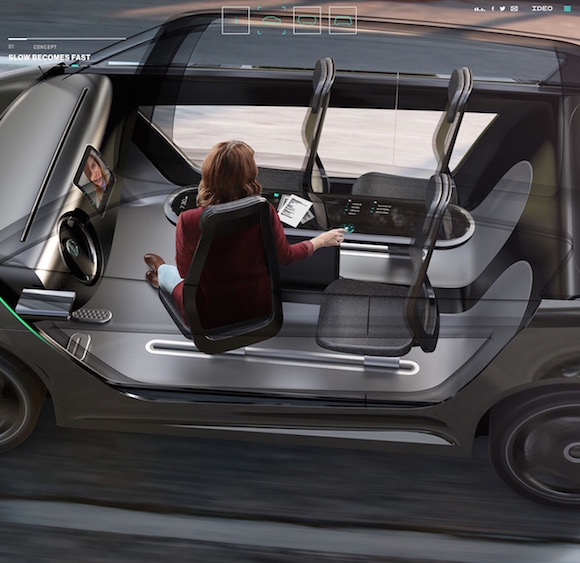
The travel and transport concepts of the future are already starting today. We still have a long way to go, so there’s also still plenty of room for new startups and their innovative ideas. This is one of the reasons CODE_n will be looking further into this area – through the CODE_n CONTEST at the CeBIT trade fair and in the new CODE_n SPACES in Stuttgart. We’re following developments closely and also going on the journey.
PS: I’ve got a strange hobby: I collect photos of charging stations for electric cars..
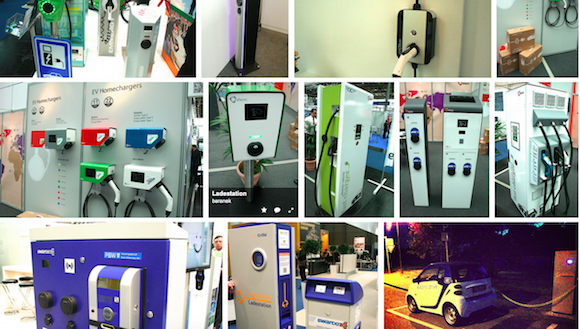



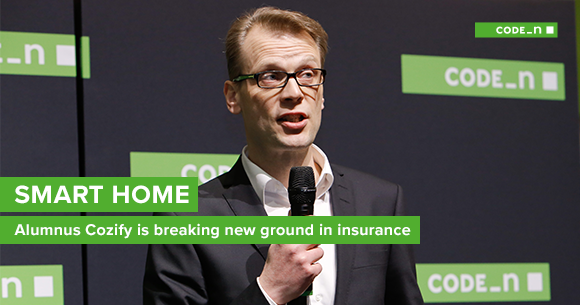

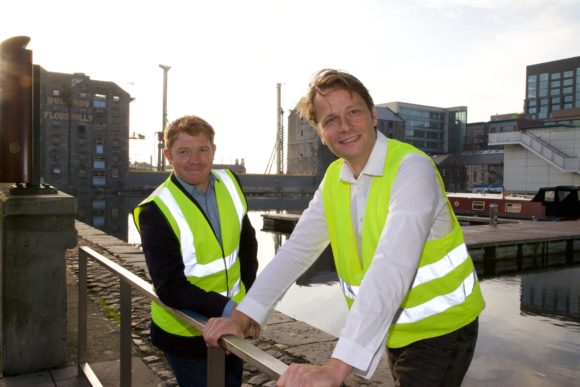
Comments